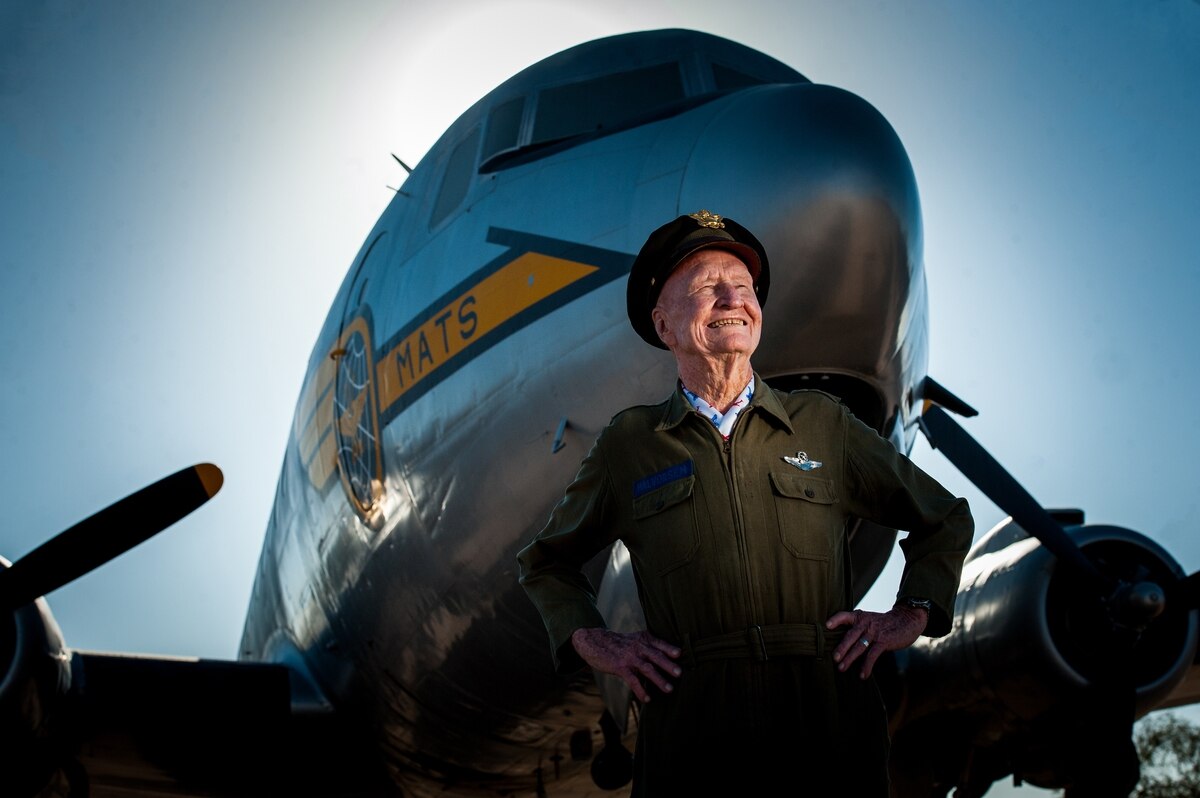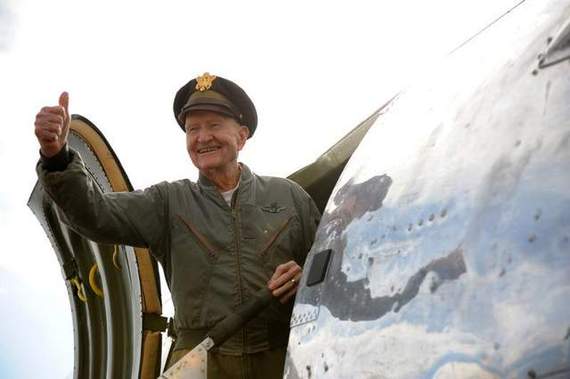
The Associated Press reported today that Retired U.S. Air Force Colonel Gail S. Halvorsen, affectionately known as the “Berlin Candy Bomber,” died at age 101 on Wednesday.
The Gail S. Halvorsen Aviation Education Foundation announced Col. Halvorsen’s passing with this tribute:
God bless you Gail, and your family too. Rest easy, skipper- we’ll take the controls now for a season and bring the plane safely home…as you always did, bringing light and joy to all in our flightpath.
Fifteen months ago, when Halvorsen was 100, we published the story below.
The Presidential Medal of Freedom, established by President John F. Kennedy in 1963, is the Nation’s highest civilian honor and is awarded by the President of the United States to “individuals who have made exceptional contributions to the security or national interests of America, to world peace, or to cultural or other significant public or private endeavors.”
A group of veterans is organizing a petition calling for the White House to bestow the Medal on Col. Gail S. “Hal” Halvorsen, also known as the “Berlin Candy Bomber.”
Six years ago, when Col. Halvorsen was a spry 93-year-old, we wrote about him and his fascinating deeds and career as part of a larger story of our younger military following in his footsteps in the skies over Iraq when so many horrific events were taking place in ISIL-dominated parts of the region.
Col. Halvorsen just celebrated his 100th birthday and has continued to make ceremonial candy drops around the world from vintage cargo planes and to share his story.

This is his story from six years ago:
As we — those of us of that generation — remember so well, at the end of World War II, the victors divided occupied Germany into four “occupation zones”: American, British, French and Soviet. Berlin, far inside the Soviet Zone, was also (sub-)divided into four “sectors.” The United States, Great Britain and France controlled and administered the western-most sections of the city, while the Soviet Union controlled — under an iron first, that is — the eastern sector.
Relations between the western powers and the Soviet Union soured quickly after the war and the situation turned hostile when the Soviet Union, in 1948, attempted to absorb all of Berlin into Soviet-controlled East Germany.
When the Soviets, in June of 1948, imposed a land blockade preventing the allies to have any rail, road or water access to “West Berlin,” the U.S. and England responded with a massive airlift of food, fuel, and other goods from allied air bases in West Germany using its “air corridors” into Tempelhof airport in West Berlin.
The “Berlin Airlift” kept life going in the beleaguered city for 11 months with a total delivery of 2,323,738 tons of food, fuel, machinery, and other supplies.
The U.S. contribution to this gigantic airlift — at the height of the airlift, one allied aircraft landed every 45 seconds at Tempelhof — was called “Operation Vittles.” A portion of those 2,323,738 tons of supplies was, would you believe, candy, sweets and chocolate.
You see, a young U.S. Air Force pilot, 1st Lt. Gail S. Halvorsen, who had flown several airlift missions into Berlin, noticed one day how desperate the little kids in Berlin were for a piece of candy, a piece of gum.
On one of his stopovers in Berlin, Halverson came across some kids who had gathered outside the fence surrounding Tempelhof to watch the non-stop takeoffs and landings of Operation Vittles. After talking to them for a while, Halvorsen realized that there was something different about these children compared to experiences with kids in other countries he had flown missions to.
In Halvorsen’s own words, “These kids didn’t have enough to eat, but they were so proud of what the airlift was doing that not one of them even made a motion to ask for candy.”
[Halvorsen] found two sticks of gum in his pockets, broke them in half and passed them through the barbed wire to the children.
“I couldn’t believe the looks on the faces of the kids who got a piece. They unwrapped it very carefully so they wouldn’t lose a piece of the broken-off end and then they took the wrappers and tore them into little pieces and passed them around. The other kids were happy just smelling a piece of the gum wrapper.
“For 30 cents, I figured, I can put these kids on easy street.”
And this is how the story — the legend — of the “Candy Bomber,” the “Chocolate Flyer,” “Operation Little Vittles” or “Uncle Wiggly Wings,” started. “A quick dip of the wings of his C-54 Skymaster transport plane, and fruit, chocolate and other sweets would parachute down from the sky,” says the Stripes.
Candy first fell from the skies over Berlin, a few ounces at a time, by way of little handkerchief parachutes attached to bags of candy, fruit, chocolates and other sweets.
Then, after receiving a wink and a nod from his commanding officer, “it was gangbusters,” Halvorsen tells the Stripes. “Members of the unit chipped in their candy rations — a real sacrifice, Halvorsen notes, because you could get a German to do a week’s washing for one chocolate bar — and the men donated handkerchiefs to keep the candy bombing operation underway.”

Eventually, as word of Halvorsen’s “airdrops” spread, “thousands of parachutes with sweets attached were boxed and sent to Germany for delivery” and confectioners started donating candies by the ton, which were flown to Berlin in 100-pound shipments, guarded like gold until distributed to the kids in Berlin.
The Soviet Union finally relented, lifted the blockade in May 1949 and the allies ended the “Berlin Airlift” in September of that year.
~.~
To add your name to the petition, please visit “We the People…”
















